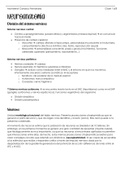Samenvatting
Summary Risk Management UVT
Dr. Lieven Baele once said during his lecture: The slides contain all the information you need to know for the exam. This document is a clear and useful replication of the slides. It will help you!
[Meer zien]







